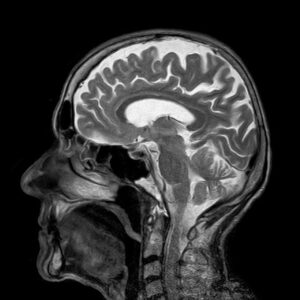Every part of a child’s body undergoes drastic change and modification as the kid grows up. Along with the internal factors, social and economic factors also influence this journey in many cases. Especially, social factors like discrimination, deprivation, etc., can potentially alter certain regions of the brain making the development process slower and less efficient.
A team of researchers has recently conducted a study to unveil the relationship between childhood trauma/stress and brain development. With the latest imaging tools, the team ventured to explore the different regions of a child’s brain to understand how gravely or insignificantly the stress elements might have impacted the young kids’ brains.
A neumaroimaging study revealed stunning facts about how the threat-processing region of the human brain responds and alters when it receives toxic stimuli at an early age. Especially adversities like racial disparities, stress, etc., can impact the tender brain in grace ways.
Sources Of Trauma
This enlightening work got published in the American Journal of Psychiatry on 1st February. This study focused on the brains of Black kids who have gone through some kind of family dysfunction, childhood trauma, and general hardships. The experts commented that compared to white children, with no such extreme experience, these children’s brains develop in a different way over time.
The primary objective of conducting the study was to find out how the brain development process for the children belonging to spate social classes (white and black) remains different. The study found that Black children, who were exposed to traumatic experiences, havea lower volume of grey matter in certain brain regions.
The Possible Consequences
The experts further warned the medical care providers about the potential impact of this low gray matter development on the child’s capacity to handle stress in future life. Consequently, the team suggested that the providers should take note of the findings carefully.
Nathaniel G. Harnett is a Ph D and one of the authors of the study. He and his colleagues highlighted that such discrepancies in brain development during the formative years may impact the brain’s ability to work or handle special situations in the long run.
Stress, experienced at an early age always impacts the brain adversely. The team emphasized creating a generalized neurobiological model for detecting the diseases consequent upon childhood trauma.

The Study
To conduct the study more accurately, the team also went through the data of the study of Adolescent Brain Cognitive Development along with MRI scans of the brain.
The sample included 7350 Americans of white skin and 1786 kids of Back skin. The study focused on comparing the images of multiple hardship-related measures in order to substantiate a relationship between changed brain structure and racial disparities.
The Findings
However, the study found that children belonging to both categories had some elements of adversity experiences in their brains. Nonetheless, the extent of trauma was way higher in Black children’s brains than in their white skin counterparts.
For Black children, the sources of such adverse experiences were more varied such as family conflicts, traumatic events, material hardships, and more. Additionally, the level of education of the parents of the Black kids was generally found to be lower. Therefore, these children often lived with families that earned less or suffered from the severe problem of unemployment.
All these aspects impacted numerous regions of the brains of Black kinds quite adversely. The experts mentioned that the most noteworthy impact on gray matter volume was found in their hippocampus, amygdala, and prefrontal cortex. Amidst all the factors mentioned above, low income was the most prominent factor for the difference in brain volume observed in amygdale and PFC.
The Suggestions
The experts associated with the study further clarified that the type of adversities the cohort experienced during their childhood could generate “Toxic Stress”. They further added that this toxicity may trigger excessive activation of the response system that deals with stress.
As a result, the stress hormones may accumulate over time. The team finally remarked that when children experience such physiological events, their brain development gets halted and interrupted. As a result, their metabolic systems and immune system change over time.
The authors mentioned that the study successfully adds to the volume of evidence available for correlating the brain development of a child with the stressful experience the kid passes through. Although more work is certainly necessary to interpret the nature of the correlation, the team asserted that childhood trauma in particular can be a brain-changer.
At SepStream®, we offer the best quality AI-integrated imaging software solutions to make the medical care process more efficient and accurate.
Go through the extensive gamut of our collection to pick the solutions that best fit your requirements. We aim to make medical facilities capable of serving more patients more effectively. Therefore, we have kept the prices affordable so that medical services could become more inclusive.